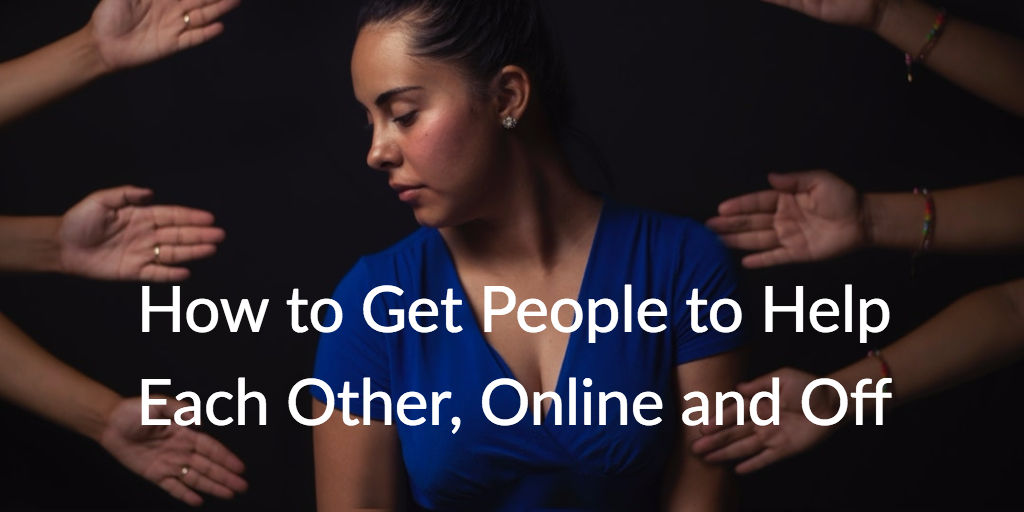How to Get People to Help Each Other, Online and Off. A 2011 research study showed that the bystander effect can actually be reversed. Of course, these requests were fictional; researchers simply wanted to know whether the study participant would respond to the request for help. But when participants saw their names highlighted in red, their public self-awareness increased and the bystander effect was reversed. The researchers explained it simply: “As we reasoned, when there are many bystanders, the possible benefits of helping for reputational concerns may be much larger than when there are only a few.” How You Can Reverse the Bystander Effect Nearly any online community can benefit from the research of Bommel and his associates. Create Public Self-Awareness The bystander effect occurs when we are aware of the other members of a group, and it reverses when we believe that the group members are aware of us. Communities can also build features to help direct requests to individuals, rather than groups. For example, in many online communities, new users pose questions as they become acclimated to the platform. In an online community, individuals can receive reputational rewards for helping others. You might say that the entire basis for the site is helping individuals in technical “distress,” and the service succeeds when individuals assist those who need help.

Nir’s Note: This guest post is by Max Ogles, who writes at MaxOgles.com.
On March 27, 1964, Kitty Genovese was brutally attacked and killed in the open streets of New York City. What makes Genovese’s story so tragic is that police later discovered 37 people were aware of Genovese’s distress but never came to her aid. The now infamous story stands as the quintessential example of the bystander effect, the psychological phenomenon where people are less likely to assist if they know other people are around. But there’s good news. A 2011 research study showed that the bystander effect can actually be reversed.
While it’s unlikely you’ll witness a murder, the bystander effect can occur online as well as off. Understanding how to get people to help one another is important for anyone building an online community.
Let’s take a closer look at why the bystander effect occurs and the critical research that shows how to reverse it.
The Bystander Effect
In the original bystander effect research, psychologists John Darley and Bibb Latané proved that in the presence of a group, individuals were less likely to help a person than if they were with a smaller group, or alone with the person who needed help.
The most common explanation for these findings is “diffusion of responsibility,” where no single person takes action because the sense of responsibility is borne by the group.
This is a lonely cry for help in a Slack channel, where many can help but no individual feels that it’s their obligation to respond. We all know better than to send out email requests to a group of people because everyone will read the email but no one will offer to help. The social dynamics are even more complex when you dive into the mind of each individual.
For example, one study found that as members of a group decide whether to respond to a request for help, they first calculate who else is aware of the situation and whether those people have information or abilities that will be more helpful or relevant. For example, when I see a broken-down car on the side of the road, I immediately think, “I shouldn’t stop, since I don’t know how to fix cars,” and I may keep driving, despite the fact that I may actually be able to help by offering a ride, making a phone call, or lending a spare tire.
These types of mental evaluations probably contributed to another fatal illustration of the bystander effect, the drowning death of a man named Raymond Zack in 2011. Firemen, police officers, and dozens of bystanders all looked on while Zack stood in deep ocean water and eventually drowned because none of the authorities made efforts to save him. Firefighters expected the police officers to save him; police officers expected the firefighters to save him. When a pedestrian bystander prepared to save the man herself, she was told not to because “the authorities would take care of the situation.” Instead, these calculations failed disastrously when everybody stood by and nobody saved Raymond Zack.
The Antidote to the Bystander Effect
The antidote to the bystander effect lies in one of the many questions we ask ourselves: Are other people in the group aware of me? Most of the time, we see…

COMMENTS